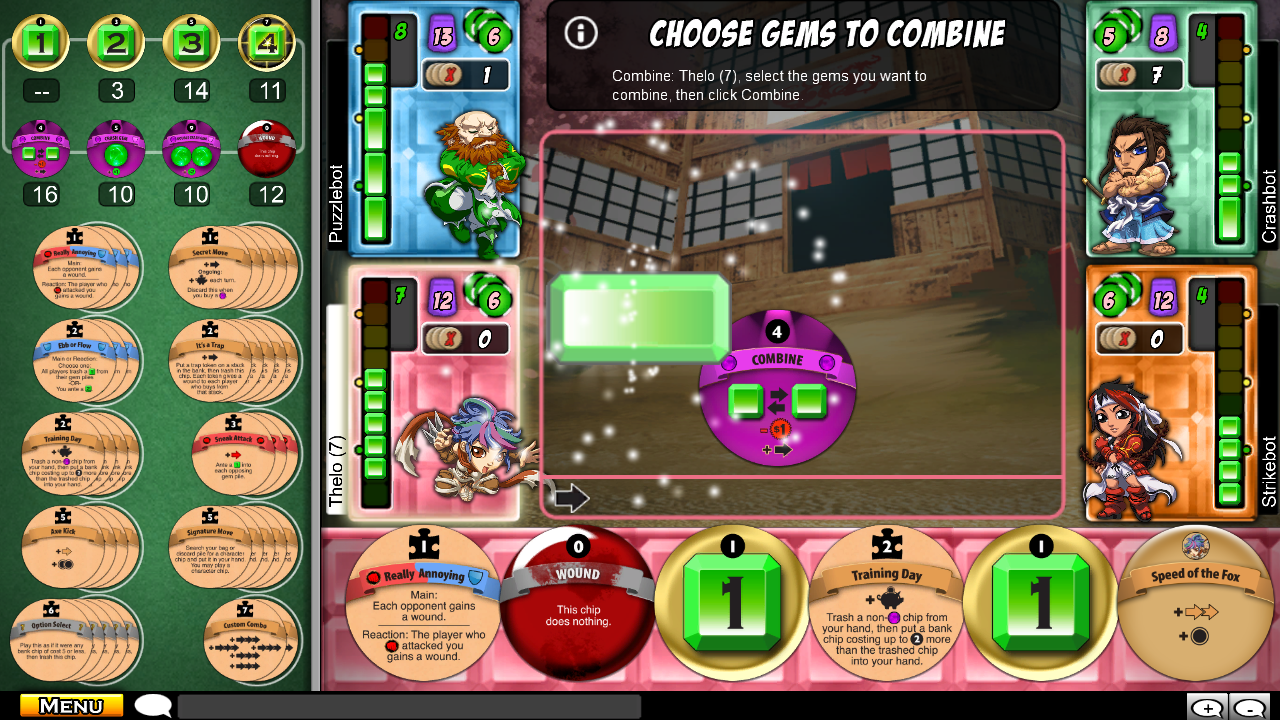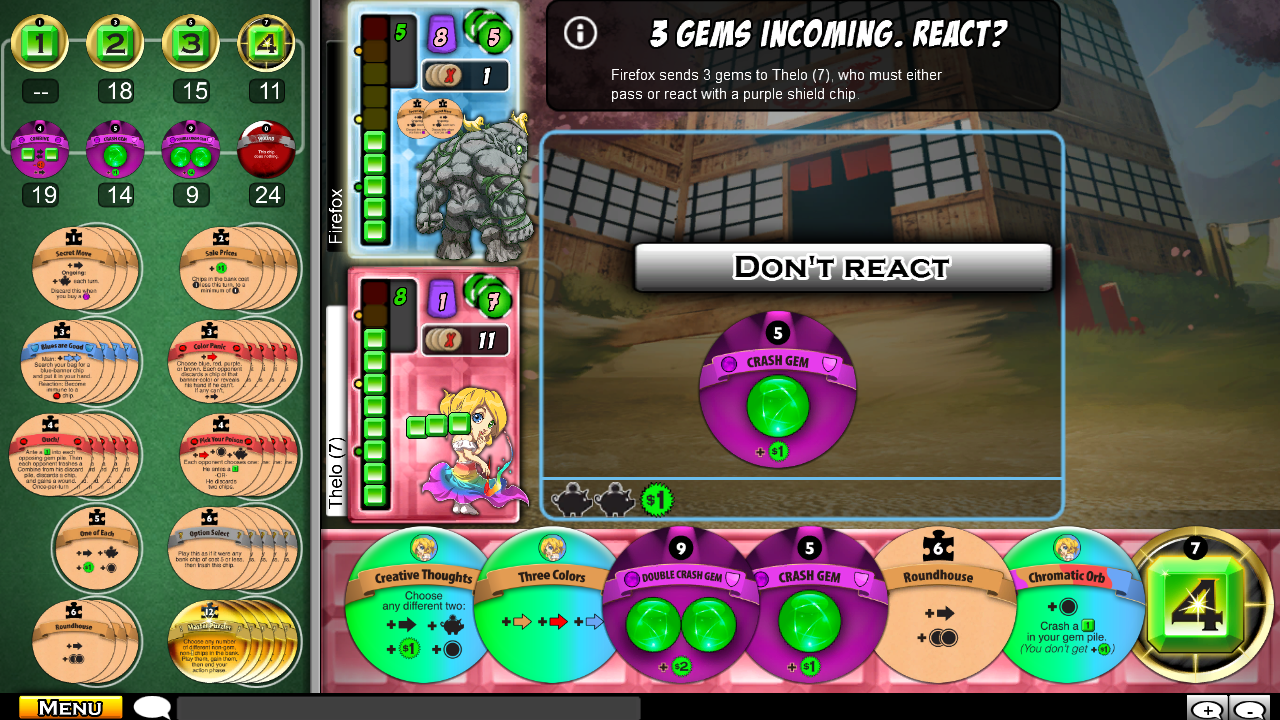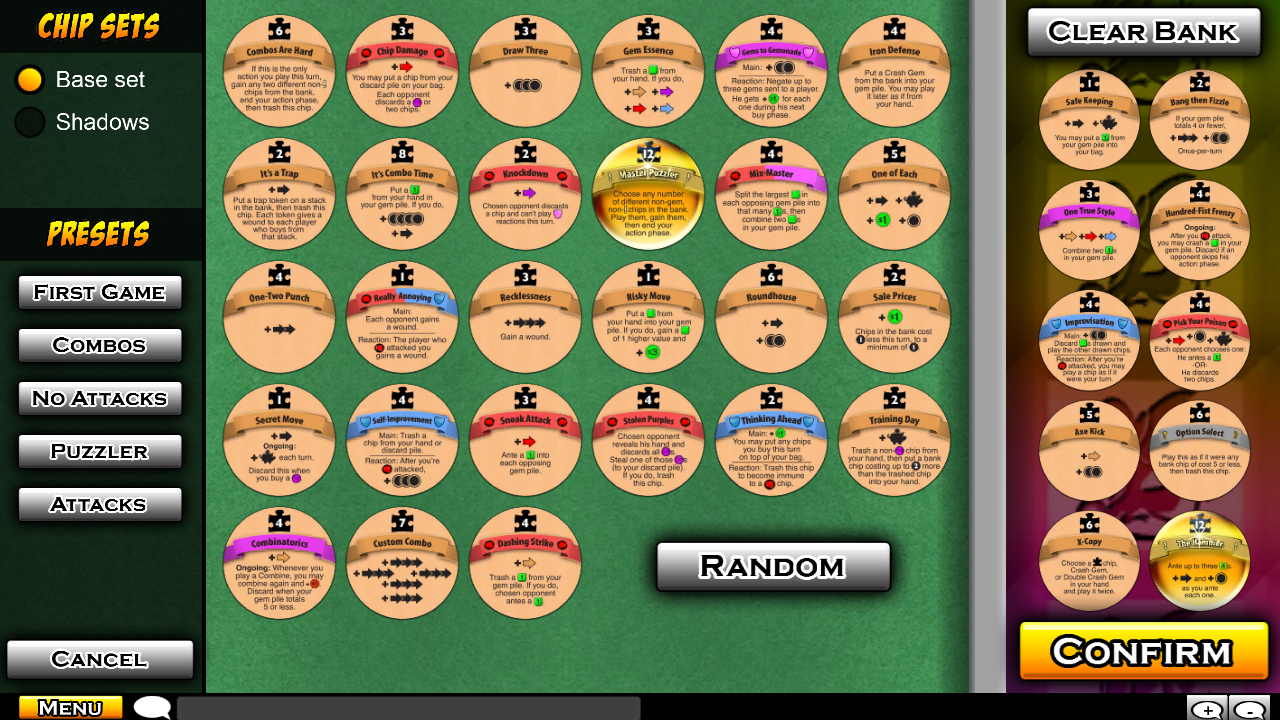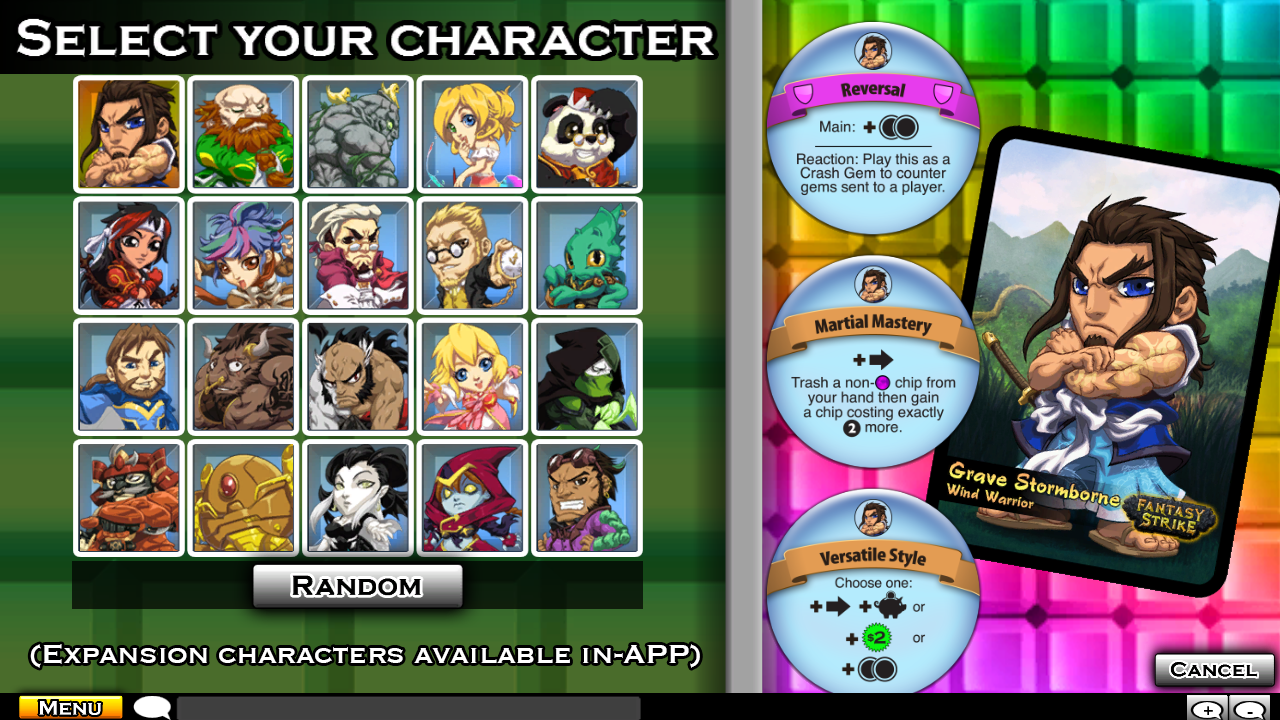Codex’s core set has two factions: the (red) Blood Anarchs and the (green) Moss Sentinels. Each has 3 heroes. There are 4 expansion factions, each with 3 more heroes plus a starter set with 2 heroes. That’s 20 heroes in total across all expansions. Each hero has an associated “spec” with a fun name, meaning the type of stuff they specialize in. We’ll look at all 20 specs in this series of articles and examine how each plays, what the art looks like, and what the philosophy is for each.
Before we go on, let's review some fundamentals about how the game works though.
- When you play the mode of the game used for competitive play, you pick a team of 3 heroes and during the game you'll have access to all the cards of those 3 specs.
- If you want to cast a SPELL, you need a HERO. You specifically need the Anarchy hero to cast an Anarchy spell, etc.
- If you want to make a UNIT (or an upgrade or building), you need a TECH BUILDING. You start with tech 0 cards you can always make because your base produces them. You need a TECH I BUILDING to make a tech I unit though. That's a flexible building because it can produce units of any spec!
- You must specialize at tech II though. When you make a tech II building, it's of a CERTAIN SPEC ONLY. If you pick Anarchy, it can only produce Anarchy tech II stuff. Also, it means your tech III building must be Anarchy tech III once you build that.
What I want you to keep in mind as you read about all the specific specs though, is that you don't have to use ALL of a spec at once. You might have an Anarchy hero (who can cast Anarchy spells), but you're still free to make a Fire tech II building if you want. Think of it as your build order having 9 branches at the start of the game: you rely on 1 of your 3 heroes and 1 of your 3 specs once you make your tech II building, and they don't have to match.
These articles will mostly talk about using both parts of the spec together (the hero+spells part and the everything-else part), but that's just so you get the theme of the spec. You're free to mix it up!
You can brush up on those rules even more with this article.
The Blood Anarchs (red faction) are first. Here are the three red heroes:
The Blood Anarchs are a shaky federation of pirates, robbers, brigands, and trouble-makers. Their equipment is sometimes shoddy or stolen. They employ captured monsters and mercenaries of several races. The Blood Anarchs rush down their enemies, and usually don’t bother with defense. They have no single leader, though the unpredictable Captain Zeno Zane (aka “Zane the Insane”) is perhaps the most feared.
Zane would like to see the Flagstone government burn to the ground, so that something else can replace it. He’d also like to see pretty much everything else spiral into chaos too. Zane’s spec is Anarchy, and it’s about disruption, aggressiveness, and surprise. Here’s his hero card:
Zane is the only hero in the game with haste. Heroes wait in your command zone for you to summon them; they aren’t cards you have to draw from your deck. That means if Zane is on your team, you can bring him in at any moment and attack with him right away. The mere threat of that pressures your opponent because they have to keep in mind that Zane could show up and attack at any time (just like in real life).
At levels 4 - 5 he gets to basically hijack the bonuses that some patrollers get. And at max level shove a patroller around and deal 1 damage to it too. It's pretty nice to be able to shove a squad leader out of the way so that you can attack something else. You could even shove it into the scavenger or technician slots to trigger his middle ability. By the way, hero powers are cumulative as they level up, so you don't lose the earlier powers.
Zane’s spells are all over the place because that's how Anarchy works. Your access to spells with such different effects allows you to throw curve balls at your opponent. For example, Surprise Attack summons two sharks out of nowhere. How does that even work?
On the other hand, Detonate is a rather violent way of getting rid of an opponent’s worker:
If this spell seems expensive at cost 3, consider what it has going for it. You can add it to your deck as a counter to certain building cards (because it destroys those too) and even if that ends up not being a factor, you can still use the card to destroy a worker. You’ll be paying 3 to do that, and your opponent will lose 1 gold every turn for the rest of the game. Waiting 3 turns to break even isn’t that great at first glance, but it can disrupt their plans quite a bit. In Codex, you need 6 / 8 / 10 workers to build your tech I / II / III buildings, respectively. Destroying a worker will delay their next tech level by at least a turn, and they’ll also have less gold than they were planning to have. Meanwhile, Detonate itself is trashed on use, not discarded, so it thins out your deck. You’ll be drawing the rest of your good cards faster, while your opponent falls a bit behind in gold and tech in the long run. This longer-term play is for tempo, and it’s the opposite of throwing sharks in their face to get things done immediately.
Stealing gold is another theme of Anarchy, and you can do it with one of the red starting deck cards and with a tech I card:
If you boost Maurader as you play him, he kills a worker. It's basically like he comes with the option to cast Detonate, if you want the tempo gain in addition to a hasty attacker. You might use just one of the above three cards to get a slight boost in tempo, or you might combine all of them to hammer away at your opponent's resources.
Another form of disruption is destroying the opponent’s tech buildings, which locks them out of playing certain cards until they rebuild. Both Disguised Monkey and Chameleon Lizzo have haste AND stealth, letting them sneak past patrollers to attack a building (or anything else) instantly:
I hope you enjoy the monkey dressed up as DeGrey. Notice that he’s only able to fool the other side for one turn though, because it’s not a very good disguise. Also notice that Chameleon Lizzo is slightly invisible in his artwork.
Anarchy tech even has an incredible defender with 6 hit points that can ALSO threaten huge damage to buildings:
That will kill tech buildings other than the opponent’s base in one hit. If it hits the base, that’s a whopping 7 damage (it takes 20 damage to win).
In keeping with Anarchy’s theme of “who knows what’s coming next?!”, check out Sanatorium:
This card is completely nuts. First of all, look at the art! Second, it’s giving you an extra card draw every turn, and third, it lets you play units even if you don’t meet the normal tech requirements for them. Maybe a green Gigadon or a black Demon of some sort will come out of that AND have haste. Opponents must absolutely destroy that building as soon as possible, because you’ll do all sorts of unfair things if you’re allowed to keep it.
At the tech III level, you get the gold standard of power: Pirate Gunship.
See Zane in the ship? Cool! Anyway, Pirate Gunship ends games fast. It only takes 3 attacks on a base to destroy it, and it has haste so really the opponent is on a 2 turn clock. Plus, it’s hard to destroy Pirate Gunship due to its resist and that it’s flying. Also, the obliterate ability means they are going down on units every turn. Tech III units are designed to end games, and Pirate Gunship does not disappoint!
Red's other two specs—Blood and Fire—are a bit more focused than Anarchy. But Anarchy's unusual forms of offense (a hero with haste, gold stealing, everything about Sanatorium, etc.) help red stay resilient to whatever strategies your opponents have planned. Make sure to mix up your build orders so your opponents don't know what's coming. The world can use a little Anarchy from time to time.





















